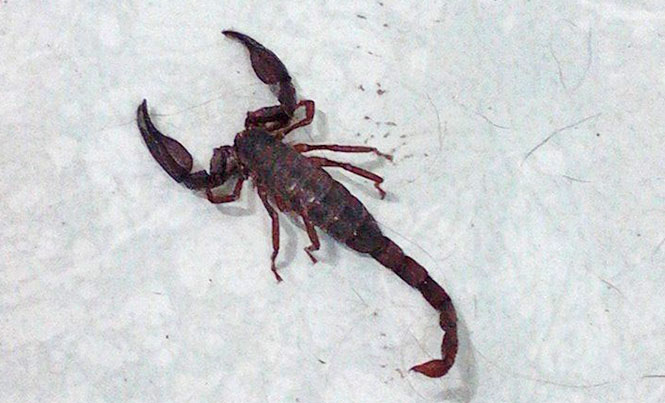
One of the most feared creepy crawlers of the jungle may one day save your life
The scorpion has a terrible reputation, and our biggest fears come true when we encounter a live scorpion in our home. But do they deserve the bad rap? It is reported that there are over 200 species of scorpions in Mexico, and only eight are considered a health risk for humans. Quintana Roo is considered a low-risk area. In general, they are not aggressive and do not want to waste their venom; people get stung by accident when they surprise a scorpion, typically by stepping on it. The scorpions prefer to save their venom and energy to be used to subdue their prey or for self-defense. But, they are a danger to each other as the female is known to eat the male after mating and in some case her babies.
Although scorpions have many eyes, they have poor vision and use vibrations and a sense of smell to survive. Some species can live for up to a year without any food or water. Belonging to the arachnid family they have eight legs, and a claw-like protrusion from the mouth which is used to suck the liquid out of their prey. The stinger is located on the end of the tail; it is a barb which injects the venom when it attacks.
According to Sciencedaily.com and other medical journals scorpion venom will someday be used to decrease heart transplant complications, and possibly treat lupus, cancer, and rheumatoid arthritis. We may even see a non-addictive pain medication made from the venom. Medical researcher shows the venom from these arachnids may help treat Parkinson’s disease and be used to produce an environmentally friendly pesticide and eliminate malarial mosquitoes.
Biodiversityexplorer.org describes highly venomous scorpions as having thick tails and thin pincers and non-venomous as having thin tails and broad, well-developed pincers. The sting is very painful and not likely fatal, but to be safe seek medical attention if you are stung.